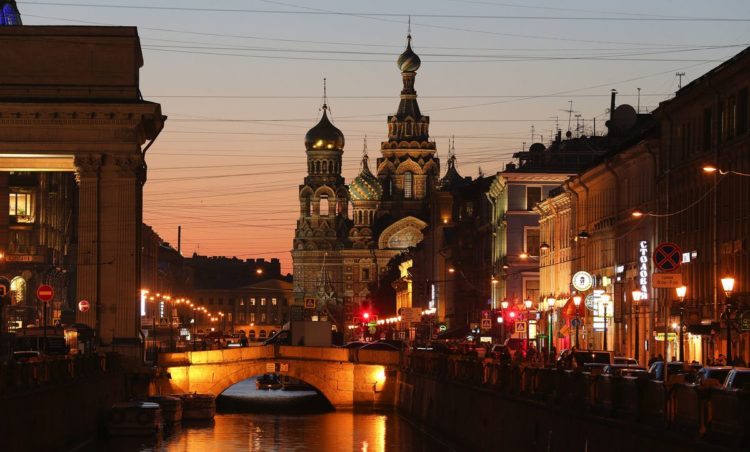Russia Still a Migrant Magnet Even as Wages Stay Below China’s

(Bloomberg) —The vast pool of labor across Russia’s porous borders is relieving strains in the labor market, helping drain the economy of inflationary pressure as it accelerates after almost two years of recession.
A steady flow of arrivals has continued even as shrinking wages and Russia’s worst currency crisis since 1998 pushed the cost of labor below the level in other major emerging economies like Brazil and China. In 2015, Russia tied Germany for second worldwide as a destination for international migrants. Their total number was just below 10 million in the past two years, with net annual increases of 18 percent in 2016 and 17 percent in 2015, according to the statistics service.
“If Russian wages were attractive for migrants even in 2015-2016, migration into Russia will likely continue once the Russian economy starts growing sustainably,” Sberbank CIB analysts including Anton Stroutchenevski said in a report.
Data on Tuesday showed unemployment unexpectedly declined in March to 5.4 percent, the lowest this year, from 5.6 percent a month earlier. Real wages rose 1.5 percent, less than forecast by economists surveyed by Bloomberg, while retail sales shrank on an annual basis for a record 27th month.
The labor market, stretched by an aging population and poor demographics, has absorbed millions of workers from across the former Soviet Union even as Russia’s economic boom went bust after the crash in commodity prices. With the ruble down 40 percent since mid-2014, salaries in Russia became “ broadly competitive” with China’s for the first time since the tsarist era ended a century ago, according to Renaissance Capital.
A decline in the nominal exchange rate brought manufacturing wages in Russia about 30 percent to 35 percent below earnings in China in 2015-2016, central bank First Deputy Governor Ksenia Yudaeva said last week. After gains in the ruble, and assuming no changes in China, increases in Russian salaries this year will still keep them lagging behind China’s level by about 20 percent, she said.
As real wages turned positive last year after declining for 15 months, the central bank increasingly focused on the threat to inflation from higher earnings. But in its two statements after rate meetings this year, the Bank of Russia made clear the risk is no longer in sight.
In March, after cutting borrowing costs for the first time in six months, policy makers repeated a phrase already used in February, saying “the observed annual rise in real wages fosters gradual growth in consumer activity without posing an additional pro-inflationary pressure.”
Migrants now account for 5 percent to 7 percent of the labor market, according to Yaroslav Kuzminov, rector of the Higher School of Economics in Moscow. Russia’s working population averaged 76.6 million last year, unchanged from 2015.
To read more about the appeal of Russian wages for foreign companies, click here.
Given the country’s demographic outlook, Russia will be relying on migrants for years to come. Over the next 15 years , the working population will shrink by about 10 million, said Alexei Kudrin, who was finance minister in 2000-2011.
China, North Korea, Vietnam, Turkey and Serbia were the biggest suppliers of labor from outside the former Soviet republics in the last three months of 2016, according to the Federal Statistics Service.
“Real wage growth would have to stem from an improvement in labor productivity, as there will be more than enough labor supply to meet any increased demand,” Sberbank CIB economists said in the report. “Therefore, the labor market should not pose much of an inflationary risk.”
–With assistance from Paul Abelsky and Zoya Shilova.To contact the reporter on this story: Olga Tanas in Moscow at otanas@bloomberg.net To contact the editors responsible for this story: Gregory L. White at gwhite64@bloomberg.net Paul Abelsky, Torrey Clark



No Comment